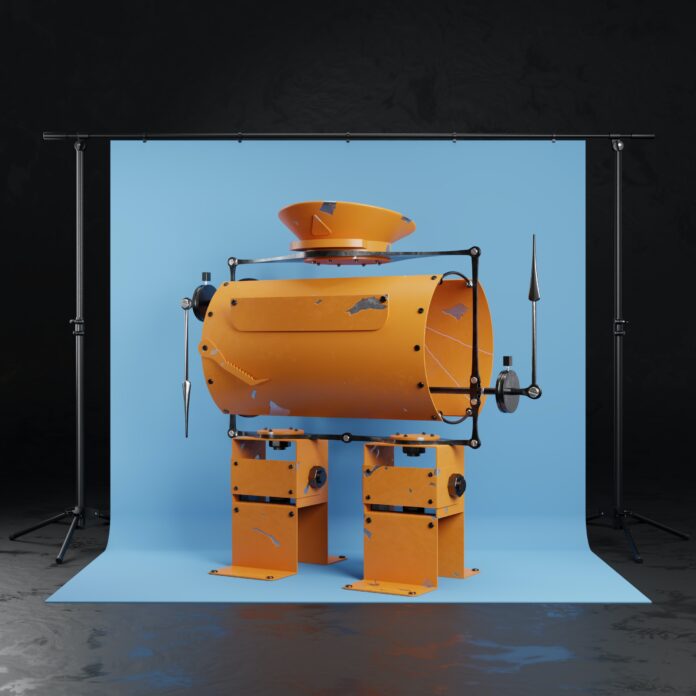Cobots, short for collaborative robots, have revolutionized the field of robotics with their ability to work alongside humans in a collaborative and interactive manner. Unlike traditional industrial robots that are designed to operate autonomously and require strict safety measures to ensure separation from humans, cobots are specifically designed to work hand in hand with human operators, enhancing productivity and safety in various industries.
Cobots are equipped with advanced sensors and intelligent programming that enable them to perceive and adapt to their surroundings, making them highly versatile in different work environments. These robots are specifically designed to interact with humans in a safe and efficient manner, creating a harmonious collaboration between human workers and automated systems.
One of the defining features of cobots is their ability to perform tasks in close proximity to humans without posing a significant risk of injury. This is made possible through the implementation of advanced safety mechanisms, such as force and torque sensors, and the ability to detect and respond to changes in their environment. By continuously monitoring their surroundings, cobots can detect the presence of humans and adjust their movements or speed to ensure safe collaboration.
Cobots can be employed across a wide range of industries, including manufacturing, healthcare, logistics, and even household chores. In manufacturing settings, cobots can assist with repetitive and physically demanding tasks, such as assembly, packaging, and quality control. By taking over these tasks, cobots alleviate the burden on human workers, allowing them to focus on more complex and creative aspects of their work. The result is increased efficiency, improved product quality, and reduced strain on human operators.
In healthcare, cobots have the potential to revolutionize patient care. These robots can be programmed to assist medical professionals with tasks such as lifting and transferring patients, delivering supplies, and even performing simple medical procedures under the supervision of doctors or nurses. Cobots can also be utilized in rehabilitation settings, where they can provide physical therapy and assist patients in regaining their motor functions.
The logistics industry has also embraced cobots to streamline warehouse operations. These robots can autonomously navigate through a warehouse, locate items, and transport them to designated areas. By automating these repetitive and time-consuming tasks, cobots enhance the efficiency of order fulfillment processes, reduce errors, and optimize inventory management.
Even in everyday life, cobots are finding their way into households. These robots can assist with household chores, such as cleaning, organizing, and even cooking. By offloading these tasks to cobots, individuals have more time and energy to spend on activities they enjoy, ultimately improving their overall quality of life.
The success of cobots lies in their ease of use and adaptability. Unlike traditional industrial robots that require specialized programming skills, cobots are designed to be user-friendly, allowing workers to program them through intuitive interfaces or even by physically guiding their movements. This democratization of robotics empowers workers across various industries to collaborate with cobots, harnessing the benefits of automation without the need for extensive technical knowledge.
Another significant advantage of cobots is their flexibility. Unlike fixed automation systems, cobots can be easily reprogrammed or reconfigured to perform different tasks. This versatility makes them highly cost-effective, as they can adapt to changing production needs without requiring significant investment in new equipment. Additionally, cobots can be equipped with different end-effectors, such as grippers, sensors, or even cameras, to cater to specific tasks and industry requirements.
As cobots continue to evolve, advancements in artificial intelligence (AI) and machine learning are being incorporated, enabling them to learn and adapt to new situations independently. This means that cobots can not only perform predefined tasks but also learn from human operators and make decisions based on their observations and interactions. This opens up exciting possibilities for cobots to handle complex and non-repetitive tasks, making them even more valuable assets in the workplace.
Moreover, cobots are designed to foster human-robot collaboration by promoting seamless communication and interaction. Through the use of intuitive interfaces and visual cues, cobots can effectively communicate their intentions and receive input from human operators. This enhances the synergy between humans and robots, as they can work together in a synchronized manner, leveraging each other’s strengths and capabilities. Such collaboration not only improves productivity but also promotes a positive work environment where humans and robots complement each other’s skills and expertise.
Safety is a paramount concern when it comes to human-robot collaboration, and cobots are built with multiple safety features to ensure the well-being of human operators. These robots are equipped with sensors that can detect unexpected obstacles or movements, allowing them to halt or adjust their actions promptly. Additionally, cobots are designed to operate at reduced speeds when working in close proximity to humans, minimizing the risk of accidents or injuries. Furthermore, some cobots are equipped with soft and compliant materials, further mitigating the risk of harm in case of accidental contact with humans.
The implementation of cobots in various industries has shown numerous benefits. Firstly, cobots can significantly enhance productivity by automating repetitive and mundane tasks. This frees up human workers to focus on more complex and value-added activities, leading to increased efficiency and output. Additionally, cobots can work continuously without fatigue, maintaining a consistent level of performance throughout the day. This consistent productivity has a positive impact on overall production timelines and can help meet customer demands more effectively.
Secondly, cobots improve product quality and consistency. As they are programmed to execute tasks with precision and accuracy, the likelihood of human error is reduced. Cobots can perform tasks with the same level of precision repeatedly, ensuring consistent quality standards in manufacturing and other industries. Moreover, cobots can integrate various inspection and quality control mechanisms, such as cameras and sensors, to identify defects or anomalies in real-time, thereby enabling swift corrective actions.
Thirdly, cobots contribute to a safer working environment. By taking over physically demanding or hazardous tasks, cobots reduce the risk of work-related injuries for human operators. This is particularly significant in industries such as manufacturing, where heavy lifting, repetitive motions, or exposure to harmful substances can pose risks to human workers. Cobots can handle these tasks with ease, minimizing the likelihood of accidents and creating a safer workplace for all.
Furthermore, the implementation of cobots can lead to significant cost savings for businesses. While the initial investment in cobots and their integration into existing workflows may require capital expenditure, the long-term benefits outweigh the costs. Cobots offer a high return on investment due to increased productivity, reduced labor costs, improved product quality, and decreased operational risks. Moreover, the adaptability and reconfigurability of cobots enable businesses to optimize their production processes and respond quickly to changing market demands.
In terms of job implications, the introduction of cobots does not necessarily lead to job losses but rather a transformation of job roles. While cobots can automate certain tasks, they also create new opportunities for human workers. With repetitive and mundane tasks offloaded to cobots, human workers can be upskilled and transition into more complex roles that require problem-solving, creativity, and decision-making abilities. Cobots become valuable assistants, working alongside humans to augment their capabilities and improve overall productivity.
Cobots have emerged as a groundbreaking advancement in robotics, revolutionizing the way humans and robots collaborate in various industries. These collaborative robots offer numerous benefits, including increased productivity, improved product quality, enhanced safety, and cost savings. With their ability to perform tasks alongside humans and adapt to changing needs, cobots have become valuable assets in manufacturing, healthcare, logistics, and even household environments. As technology continues to evolve, cobots will further advance, incorporating AI and machine learning to handle increasingly complex tasks. The potential of cobots is boundless, as they continue to redefine the possibilities of human-robot collaboration. Research and development efforts are focused on enhancing their capabilities, refining their safety features, and expanding their applications across diverse industries.
In the manufacturing sector, cobots are expected to play a pivotal role in the era of Industry 4.0. The integration of cobots with other advanced technologies, such as the Internet of Things (IoT) and cloud computing, enables seamless communication and data exchange between machines, leading to optimized production processes and real-time decision-making. Cobots can work in tandem with automated systems, sharing information and coordinating tasks, ultimately resulting in a more efficient and agile manufacturing ecosystem.
The healthcare industry stands to benefit immensely from cobot technology. With an aging population and increasing demands for personalized care, cobots can alleviate the strain on healthcare professionals by assisting with patient care, medication administration, and monitoring vital signs. Cobots equipped with AI capabilities can analyze patient data, identify patterns, and contribute to the early detection of diseases. They can also serve as companions for the elderly or individuals with special needs, promoting social interaction and providing assistance with daily activities.
Logistics and warehouse management are domains where cobots have already demonstrated significant impact. These robots excel at tasks such as inventory management, order picking, and packaging. By streamlining these operations, cobots enhance the efficiency of supply chains, reduce errors, and expedite order fulfillment. With the integration of autonomous navigation systems and smart sensors, cobots can seamlessly navigate through dynamic warehouse environments, adapting to changing layouts and avoiding obstacles.
The service industry is another sector that can benefit from the deployment of cobots. In restaurants, cobots can assist with food preparation, dishwashing, and customer service, ensuring faster service and improved customer experience. In retail, cobots can automate inventory management, restocking shelves, and providing information to customers. Their ability to interact with customers in a friendly and approachable manner enhances the overall shopping experience.
The educational realm is also exploring the potential of cobots in the classroom. These robots can serve as interactive teaching assistants, providing personalized instruction, and facilitating hands-on learning experiences. Cobots can adapt their teaching methods based on individual student needs, offering targeted support and fostering student engagement. This integration of technology in education holds promise for the future of learning.
However, as cobots continue to evolve and become more prevalent, ethical considerations must be taken into account. The impact of cobots on employment and job displacement must be carefully managed. Adequate training and reskilling programs should be put in place to equip workers with the necessary skills to collaborate effectively with cobots and take on new roles in the evolving work landscape. Moreover, the ethical use of cobots must ensure privacy and data security, as these robots often interact with sensitive information or perform tasks that require safeguarding personal data.
In conclusion, cobots represent a transformative force in the field of robotics, enabling humans and robots to work together harmoniously and unlock new possibilities in various industries. With their collaborative nature, advanced sensing capabilities, and adaptability, cobots enhance productivity, improve safety, and open doors to innovation. As technology continues to advance, cobots will undoubtedly play an increasingly significant role in shaping the future of work, revolutionizing industries, and enhancing our daily lives.


















